"We have a new product called Brain Power which is a fantastic nootropic. It is good to go. It is really good -- it's like a really CRISP focus, I can feel it. If I've got to get on stage like this morning when I presented here, I did 15 minutes but got 3 and a half hours of sleep last night, so before that I took Brain Power.
So something like that will lead me to take Brain Power if I've got to get up and do something with cognitive requirements."
Introducing Jocko Brain Power Nootropic – Work Harder And Smarter
Jocko Willink is a huge believer in self-discipline, and nobody would deny that's a crucial component of personal success. But let's face it, applied willpower will get you better results if you work not only harder, but smarter too. (You can learn more about Jocko in the conclusion of this article)
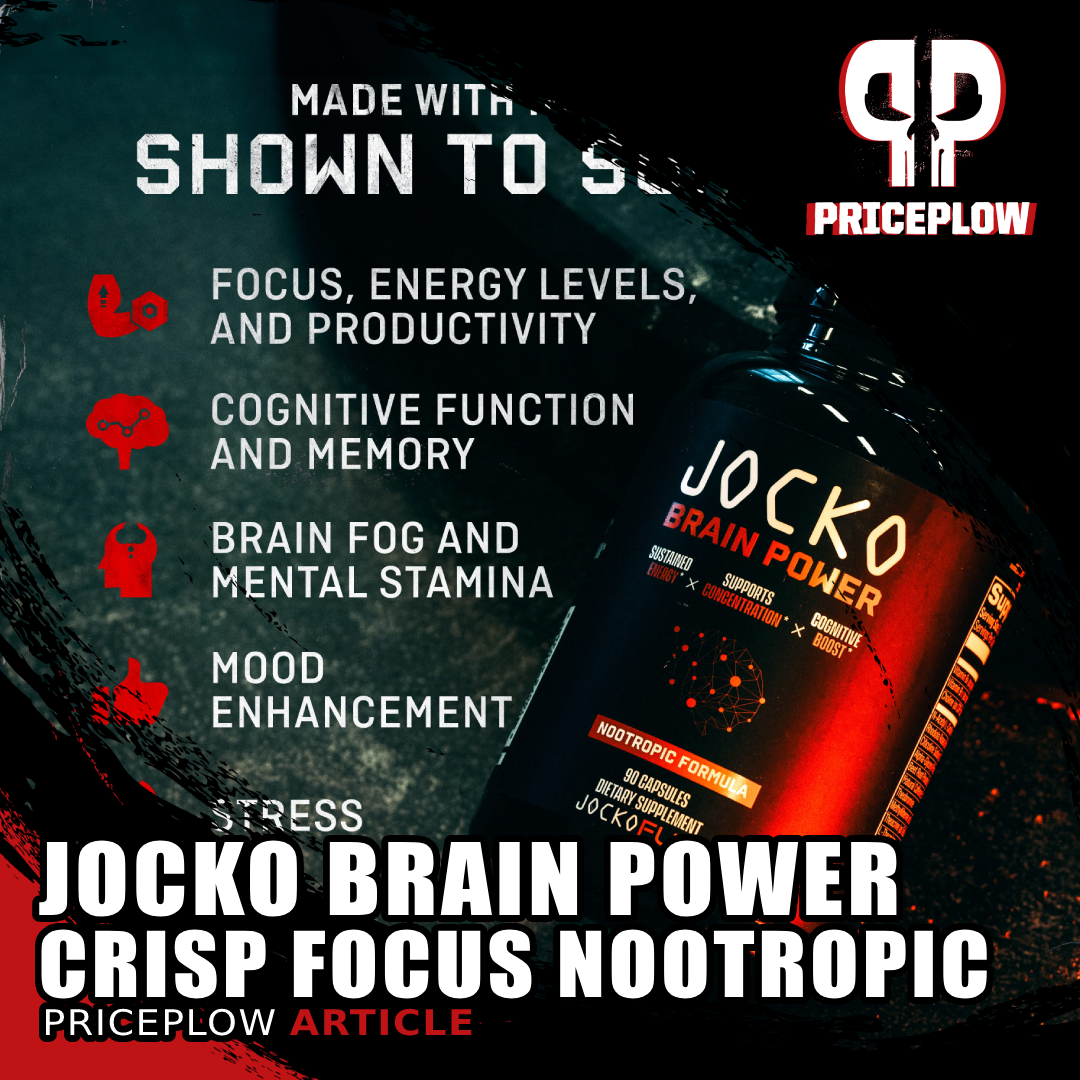
Jocko BRAIN POWER is a powerful nootropic with 100mg caffeine, providing CRISP focus thanks to 3 other xanthines (Dynamine, Theacrine, theobromine) and so much more!
To help you work smarter, Jocko Fuel has released Jocko Brain Power Nootropic, a capsule formula featuring an even-keeled 100 milligrams of caffeine in 3 capsules, alongside over a half-dozen of our favorite cognition-boosting ingredients.
You can think of this formula as a mental force multiplier. When it comes to cognitive tasks, if your brain is working more efficiently, then you'll undoubtedly get a higher ROI on whatever mental energy you invest in your essential tasks.
It also includes the synergistic caffeine + Dynamine + Theacrine combination, with dosing very similar to what's been studied in research (only a bit less caffeine). Combine that with the theobromine, and we have four different xanthines inside! Talk about a cool formula.
The PricePlow Podcast with Jocko
We recently sat down with Jocko himself at the Vitamin Shoppe expo for Episode #132 of the PricePlow Podcast and learned why he started Jocko Fuel, as well as his relationship with fellow co-founder and chief product officer (CPO) Brian Littlefield (of Episode #111).
Along the way, Jocko told us about how this specific product has helped him feel better, and achieve more, in his own life. That's where this article's introductory quote came from -- you can see this art for himself:
Now let's get into the formula, but first, check prices and availability on PricePlow, and sign up for our Jocko Fuel news alerts:
Jocko Fuel Brain Power – Deals and Price Drop Alerts
Get Price Alerts
No spam, no scams.
Disclosure: PricePlow relies on pricing from stores with which we have a business relationship. We work hard to keep pricing current, but you may find a better offer.
Posts are sponsored in part by the retailers and/or brands listed on this page.
This area is reserved for Team PricePlow's upcoming videos.
Subscribe to our channel and sign up for notifications so you catch it when it goes live!
Jocko Brain Power Ingredients
Each 3-capsule serving of Brain Power contains the following:
-
N-Acetyl L-Carnitine Hydrochloride – 400 mg
Acetyl L-carnitine (ALCAR) is a form of carnitine with special neuroprotective, neurotrophic (i.e., promoting neural growth), and nootropic effects. Thanks to its brain-protective properties, ALCAR can even mitigate depressive symptoms.[1]
Like any other form of carnitine, ALCAR's basic mechanism of action is transporting energy substrates like glucose and fatty acids to your mitochondria, which can then take up those substrates and convert them into adenosine triphosphate (ATP),[2] which is the form of energy that powers all your cells' metabolic processes.
Naturally, for optimal health and function, all cells depend on a steady supply of ATP, which means any type of cell can benefit from carnitine's pro-metabolic effects – including neurons.
What makes ALCAR so effective in supporting neuronal health and function is its ability to cross the brain blood barrier (BBB), which gives it a much higher degree of activity, compared to other forms of carnitine, in the brain and central nervous system.[3]
Long story short? Carnitine shuttles fatty acids into the mitochondria, leading to the generation of ATP.[4]
In other words, it's not that ALCAR works better than other forms of carnitine at the cellular level – rather, it can access types of cells (i.e., brain cells) that other forms of carnitine can't. Animal research has even demonstrated that ALCAR administration can significantly increase neuroplasticity, and facilitate learning.[5]
And a human study, carried out in men and women older than 65 who'd been diagnosed with mild cognitive impairment, revealed that ALCAR supplementation significantly increased their scores on a variety of cognitive tests, compared to an inert placebo.[6]
Mood improvements too!
Research has consistently shown that individuals with lower carnitine levels are at greater risk of mood disorders, and the severity of carnitine deficiency correlates with the progression of said disorders.[7] However, there's a lot of high-quality research showing that L-carnitine supports mood improvements in these individuals -- and an entire meta-analysis devoted to the use of ALCAR specifically![8]
So when it comes to a good-mood nootropic, Jocko's off to a great start. And on that front, it only gets better from here:
-
Rhodiola Rosea (Rhodiola rosea) (root) – 300 mg
Rhodiola rosea is a potent adaptogen. Adaptogens are substances that can help the body adapt to physical and mental stressors, and restore homeostasis. In plain English, they exert a normalizing effect on bodily functions. For example, an adaptogen that affects cortisol should increase cortisol when it's too low, but also decrease the hormone when levels are too high. This context-dependent action makes adaptogens very powerful tools in our arsenal for pursuing optimal health and wellness.
With Rhodiola, the salient mechanism is normalizing serotonin levels,[9] which can lead to significant improvements in mood,[10] a great follow-up for the ALCAR.
But beyond its potent effect on mood, Rhodiola can also support learning by upregulating a process called long-term potentiation (LTP),[11] which is your brain's mechanism for converting short-term memories into long-term ones.
In one study, 14 days of supplementation with 200 milligrams of Rhodiola extract – less than the dose used in Jocko Brain Power Nootropic – caused significant decreases in anxiety, stress, anger, confusion, and depression, plus significant improvements in overall mood.[12]
In another study, 101 subjects taking 200 mg 2x/day – which is slightly more than we have in Jocko Brain Power Nootropic, but still close – experienced significantly decreased feelings of stress in just three days after the initiation of supplementation.[13]
Rhodiola can help fight both mental and physical fatigue at lower doses (100 mg for 20 days)[14] and higher doses (370-555 mg).[15]
It's important to realize that one of Rhodiola's serotonin-balancing mechanism of action is through monoamine oxidase (MAO) inhibition.[16,17] This means that if you're currently taking a prescription psychiatric drug, there is a potential for interaction. If you're not sure whether you should take Rhodiola, ask your physician about it.
-
Citicoline Sodium (CDP Choline) – 150 mg
Citicoline is a form of choline that's preferred by many formulators, thanks to its exceptionally high degree of bioavailability. This is the first of two choline donors in Brain Power.
Your body needs choline as an essential building block for the phospholipid bilayer membranes that act as the outer layer and barrier for all your body's cells.[18] Without healthy, intact cellular membranes, cells can't survive or function, so this alone makes choline an incredibly important nutrient.
But the reason we often see choline used in nootropic applications is that it's one of the chemical precursors for acetylcholine, a neurotransmitter that coordinates fundamental processes of learning and memory.[20] In fact, we often refer to acetylcholine as the learning neurotransmitter for that very reason.
Acetylcholine is best known as a mediator of memory consolidation, the brain's process for converting short-term memories into long-term ones.[21]
However, memory isn't the only function that's positively impacted by acetylcholine upregulation. Other cognitive skills benefit too, among them psychomotor skills like balance and coordination.[22,23]
What's more, the two molecules that comprise acetylcholine, choline and uridine, have been shown to independently enhance cerebral blood flow while also supporting neuronal mitochondrial function.[24]
Compared to other forms of dopamine, citicoline has a bigger impact on focus, attention, and mental energy.[25] This can be explained largely by citicoline's exceptional dopaminergic activity.[26]
-
Alpha-Glyceryl Phosphoryl Choline 50% – 150 mg
Alpha-GPC is another form of choline. Like citicoline, alpha-GPC is highly bioavailable, and is particularly capable of crossing the blood-brain barrier.[27] This means that with alpha-GPC, you're getting all the nootropic benefits of citicoline, and probably then some.
One randomized-controlled study from 2018, using an inventory of mood and cognitive state called the KOKORO scale, found that consistent alpha-GPC supplementation increased motivation in human subjects.[28] Interestingly, this effect seemed to be especially pronounced at night, making alpha-GPC a good potential alternative to caffeine if you want to burn the midnight oil without compromising on the quality of your sleep.
Alpha-GPC is one of the best-studied choline forms in humans. Clinical trials have found that alpha-GPC can significantly improve behavioral and psychometric outcomes in Alzheimer's disease[29,30] and vascular dementia,[31,32] a type of dementia caused by impaired cerebral blood flow.
Although the effect has yet to be replicated in humans, some compelling animal research has demonstrated that alpha-GPC can help repair the all-important blood-brain barrier, the selectively permeable membrane that allows nutrients into the brain while keeping toxins out.[33]
One study in rats shed some really interesting light on alpha-GPC's possible mechanisms of action when it comes to neuroprotection. When rats had the blood flow to their brain disrupted, alpha-GPC not only helped restore normal circulation in the brains' microvessels, it also protected the vulnerable brain cells from the oxidative and inflammatory damage that typically follows ischemia (stroke).[34]
Now it's time to get some blood flow moving:
-
Beet Root Powder (Beta vulgaris L.) – 150 mg
Beet root powder is an excellent whole food source of nitrates, which are precursors to nitric oxide (NO) synthesis.
Any time you consume nitrates, bacteria in your mouth chemically reduce those nitrates to nitrites, whereupon the nitrites get mixed with your saliva. Then, when swallowed, the nitrites are converted into nitric oxide in the acidic milieu of the stomach and gastrointestinal tract, a process that's facilitated by the enzyme salivary peroxidase.[35-37] This process, which is initiated by the salivary glands,[38-40] is known as the nitrate-nitrite pathway.[41,42]
According to a 2013 meta-analysis,[43] supplementing with nitrates can have the following benefits:
- Better circulation[44]
- Greater aerobic efficiency[44-47]
- Increased strength[48,49]
- Improved recovery[50]
- More cellular energy[49,51,52]
Beets' star players – betalain and betanin
You probably already know that beets have a natural bright purple hue. As it turns out, there's a small group of specific chemical compounds that are responsible for this coloration, called betalains. And, as is often the case with naturally-occurring food pigments, betalain ingestion comes with some pretty impressive health effects.
Betalains are what we call plant defense chemicals, meaning they have their evolutionary roots in the beet plant's attempt to defend itself. Betalains have significant antimicrobial effects – specifically, they're capable of destroying the cell membranes that microbial organisms depend on for survival.[42]
Betalains can also have a positive impact on metabolic health and function. For example, one study found that when diabetic rats took a betalain supplement, their blood glucose level dropped by an incredible 40%.[53]
Betanin, a specific type of betalain, has been shown to possess significant anti-oxidant and anti-inflammatory effects.[54]
How nitrates impact brain health
Research is showing that the brain, perhaps more than any other organ in the body, is exquisitely sensitive to fluctuations in blood flow – even mild impairments to cerebral circulation can have devastating health effects. Because of this, and NO's crucial role in supporting healthy blood flow, NO and the enzymes responsible for synthesizing it are emerging as key players in maintaining healthy cognition[55] and increasing cognitive performance above baseline.[56]
In fact, impairments in NO signaling, and hence cerebral blood flow, have been implicated in the development of Alzheimer's disease.[55]
Peer-reviewed research increasingly suggests that NO is a kind of panacea for not only physical health and performance, but mental and cognitive as well. One randomized, double-blind, placebo-controlled study, found that increased dietary nitrate intake via beetroot juice supplementation can improve cognitive performance during exercise.[58] This result should suggest a robust effect on cerebral blood flow, since the cardiovascular demands of exercise ordinarily lead to temporary declines in cognition during and after exercise. And indeed, the same study confirmed the increased cerebral blood flow via near-infrared spectroscopy (NIRS).[58]
Another double-blind RCT found that a chewable beetroot supplement caused statistically significant improvements in subjects' scores on the Rey Auditory Verbal Learning Test immediate (+20.69%) and delayed (+12.34%) recalls. The same study found significant enhancement of both frontal lobe functions and cognitive flexibility.[59]
-
Natural Caffeine Anhydrous (from Coffee Bean) -- 100 mg
Caffeine is the well-known stimulant that can cross the blood-brain barrier,[60] a semipermeable membrane whose function is to keep toxins out of your brain, while allowing nutrients in. Most readers should know what it will do for you, so what's important to note is that we have 100 milligrams (a low-dose), but it's just one part of a quadfecta with four xanthines total in Brain Power!
Jocko Willink joins PricePlow for Episode 132 to talk about founding Jocko Fuel, doing the right thing when formulating supplements, and Jocko's entire stack from start to finish
Because caffeine is so active in the brain and central nervous system, it has profound effects on mood, focus, and vigilance. Although common parlance speaks of caffeine's wakefulness-boosting effect giving us energy, that's not technically how it keeps us awake – it would be more accurate to say that caffeine decreases fatigue by inhibiting the action of adenosine, a nucleotide byproduct of ATP hydrolysis that builds up while we're awake.[61,62]
However, when it comes to a different set of effects – boosting mental and physical performance – it is literally true that caffeine gives us more energy. That's because caffeine inhibits phosphodiesterase, an enzyme that breaks down a messenger molecule called cyclic adenosine monophosphate (cAMP).[61-64] Decreased phosphodiesterase activity means more cAMP, and since cAMP basically instructs your cells to produce more energy, the net effect is an increase in whole-body cellular-metabolic rate.
Primarily for this reason, caffeine can help increase multiple dimensions of athletic performance, by increasing the body's overall capacity for work – in other words, caffeine is an ergogenic aid.[63]
But when it comes to Jocko Brain Power nootropic, we're most interested in caffeine's cognitive benefits – it's been shown to improve attention, alertness, working memory, and reaction times.[65-67]
Incoming synergy with Dynamine and Theacrine!
The Jocko GO Energy Drink sports just 95 milligrams of caffeine, but formulator Brian Littlefield stated on our podcast that it's been shown to outperform caffeine alone! We hope this data gets published soon
One thing that's important to note is that Brain Power also contains Dynamine (methylliberine) and TeaCrine (theacrine), two other synergistic ingredients. These are each discussed below in their own sections, but three studies have shown synergistic effects with the three xanthine compounds![68-70]
However, it's also important to note that while those studies used the same amount of Dynamine and TeaCrine that we have here, those studies did use more caffeine (150 and 125 milligrams, as opposed to the 100 we have here).[68-70]
So if you really want to replicate them, you'll need to dose up just a smidgen more caffeine. Most users will have no problem with this -- the Brain Power caffeine dose is low enough that you can still drink your coffee, have a GO Energy Drink, or try Jocko Pre Workout!
-
Theobromine – 100 mg
Theobromine is yet another methylxanthine alkaloid. It's actually a metabolite of caffeine, but also occurs naturally in cocoa. Despite being generally under-researched, theobromine has been proposed as a possible explanation for both the health benefits associated with cocoa consumption.[71]
Again, there isn't much clinical research on theobromine at all, let alone in humans, but the initial findings have been promising. For example, one study in mice found that theobromine can upregulate brain-derived neurotrophic factor (BDNF) and improve psychomotor learning outcomes.[73]
Theobromine's BDNF-boosting effect may be related to one thing we do know about it for sure, which is its ability to upregulate cyclic adenosine monophosphate (cAMP) through phosphodiesterase inhibition. This pro-cAMP mechanism, which is typical of methylxanthine alkaloids like caffeine, actually affects downstream BDNF signaling through a mediator called cAMP-response element-binding protein (CREB).[73,74]
Another study, this one in rats, found that theobromine administration significantly improved the rodents' working memory as assessed by their performance on a maze test. Moreover, this study actually sacrificed the animals and studied their brain tissue, where the researchers found elevated levels of phosphorylated CaMKII (p-CaMKII), phosphorylated CREB (p-CREB), and BDNF, which is basically confirmation that theobromine is upregulating BDNF through the CaMKII/CREB/BDNF pathway.[74]
-
Methylliberine (as Dynamine) – 75 mg
Dynamine is a trademarked, designer preparation of methylliberine, a stimulant alkaloid that can be found in Camellia sinensis (true tea) leaves.[75,76] Much like its chemical cousin caffeine, methylliberine can increase dopamine and noradrenaline signaling, while fighting fatigue through adenosine antagonism.[75-78]
Notably, methylliberine does not cause vasoconstriction,[75] a characteristic it shares with theobromine.
This is in Jocko's nootropic, also like theobromine, to give a little bit of extra energy without the drawbacks that are typical of high doses of stimulants.
Note the synergistic caffeine/Dynamine/Theacrine combination that this is a part of![68-70]
-
Theacrine (as TeaCrine) – 50 mg
Theacrine is another close chemical relative of caffeine's,[79] which occurs naturally in a traditional Chinese strain of tea called Camellia kucha, also known as kucha tea.[80]
Again, theacrine possesses the same basic mechanisms of action common to the methylxanthine class – it can fight fatigue by inhibiting adenosine receptors,[81] thus preventing that nucleotide from causing you to feel tired as it accumulates. It also inhibits phosphodiesterase, the enzyme responsible for degrading the second messenger molecule cyclic adenosine monophosphate (cAMP), thus raising cAMP levels and cranking up cellular metabolism, as a result.[82]
Read about the Jocko Pre-Workout on PricePlow
Finally, theacrine is also dopaminergic,[83] making it a great choice, like theobromine and methylliberine, for enhancing focus, motivation, and energy.
Theacrine also has some benefits for athletic performance. One study found that theacrine administration can prolong time to exhaustion at 85% VO2max by 27-38%.[84] Although this isn't technically a nootropic effect, the effect size is big enough that we think it's worth mentioning anyway.
If you're reaching for Jocko Brain Power Nootropic to help cope with a stressful situation, it's worth noting that an animal study demonstrated theacrine administration can help prevent stress-induced liver damage.[80]
All of this may sound somewhat unremarkable at first blush – just another run-of-the-mill stimulant alkaloid; another caffeine clone. But as it turns out, theacrine does have an ace up its sleeve. Whereas the human body rapidly becomes habituated to caffeine, with chronic caffeine administration building up a compensatory tolerance that nullifies certain benefits, it appears that theacrine does not cause habituation.
Get ready for an epic interview - in Episode #111 of the PricePlow Podcast, we brought on Brian Littlefield, Chief Product Officer of Jocko Fuel, who announces the new naturally-sweetened Jocko Pre-Workout
While one animal study found that chronic theacrine application did not induce psychomotor tolerance,[83] the real headline here is that a randomized, double-blind, placebo-controlled study in humans replicated the effect.[85]
In this study, neither 200 mg/day nor 300 mg/day of theacrine, taken for 8 weeks, adversely affected any markers of cardiovascular safety (e.g., blood pressure and heart rate).[85] Nor did the researchers behind this study find any evidence of drug habituation – baseline measures of energy, focus, concentration, anxiety, motivation to exercise remained stable across the entire study period, meaning that there was no significant theacrine withdrawal effect noted in this study population.[85]
Last reminder for you -- theacrine is part of the synergistic trifecta with Dynamine and caffeine![68-70]
Yes, we have four xanthines here!
So yes, this means that Jocko Brain Power has four xanthines! This is awesome -- they do appear together in nature, after all.
-
L-Theanine – 50 mg
Theanine is an amino acid with GABAergic effects. In other words, theanine imitates the action of the neurotransmitter gamma-aminobutyric acid (GABA),[86] which has an inhibitory, anti-excitatory effect on neurons.[87-89]
What GABA upregulation feels like is a distinct drop in anxiety, and a feeling of mental and physical relaxation. Still, theanine is not a sedative – it can help you unwind without making you feel tired.[91]
Synergy with caffeine
Although there's no caffeine in Jocko Brain Power Nootropic, let's face it, most of us are using caffeine in some form or another on a daily basis. So with that in mind, it's worth mentioning that theanine has excellent synergistic effects with caffeine. In fact, the ultra-simple and dirt-cheap caffeine+theanine stack was one of the first nootropic stacks that the biohacker community ever came up with, due largely to a 2008 randomized controlled trial that found the combination of caffeine and theanine caused greater cognitive enhancement than either supplement on its own.[88]
While it's still not known exactly how theanine synergizes with caffeine,[92] it probably has something to do with theanine's ability to reverse the cerebral vasoconstriction that can be caused by caffeine administration.[93]
Theanine is so relaxing that it's actually used as a sleep aid,[91,94] which we think you'll agree is a super important aspect of keeping cognitive performance optimized. Again, the mechanism here is theanine's GABAergic activity, which can help help induce sleep by decreasing heart rate.[95]
Dosage and Directions
Take 3 capsules whenever you need some extra energy and cognition. With a low-caffeine dose, this can be combined with Jocko GO Energy Drink, and it can be taken slightly later in the afternoon than higher-caffeine products -- but please understand your caffeine tolerance before pushing it too hard!
Who is Jocko Willink, anyway?
For anyone who cares about self-improvement, martial arts, and tales from the Global War on Terror (GWOT), there is no name more renowned than Jocko Willink.
Jocko is the host of the Jocko Podcast, which is known the world over for its unsparing, no-holds-barred discussions about life, leadership, and freedom through self-discipline. Drawing on his life-and-death experiences during a 20 year career as a U.S. Navy SEAL, Jocko helps his audience examine themselves, identify their shortcomings, and set themselves on a better trajectory through life's trials.
During the process, he founded a dietary supplement brand, Jocko Fuel. The company has so zar embodied the exacting standards you'd expect from a multi-decade special operations veteran.
Jocko Fuel's Commitment to Clean and Pure Formulation
All Jocko Fuel products place a premium on purity and helping support your clean-eating goals. They use only natural flavorings, sweeteners, and colorants, eschewing cheaper synthetic alternatives that often have dubious safety profiles.
When it comes to Jocko's nootropic product specifically, which is sold in capsule form, you can see from the label that besides the active ingredients, it contains only rice powder, vegetable cellulose (from the capsule), and the amino acid L-leucine.
Flashback: The PricePlow podcast with Brian Littlefield

Get ready for an epic interview - in Episode #111 of the PricePlow Podcast, we brought on Brian Littlefield, Chief Product Officer of Jocko Fuel, who announces the new naturally-sweetened Jocko Pre-Workout
Don't forget, we also did a recent PricePlow podcast with Brian Littlefield. That episode came out of an incredible trip to Maine that we took last year, where they toured the Jocko Fuel offices and Origin USA facilities, a made-in-America clothing company that's dedicated to bringing back American industry. Listen to Jocko Fuel Formulator Brian Littlefield Announces Jocko Pre-Workout | Episode #111 now.
Conclusion – An Emphasis On Cerebral Blood Flow
The best supplement formulas focus on one or two essential mechanisms for achieving the desired result, and then focus on exploiting those mechanisms through complementary or synergistic ingredient stacking.
When it comes to Jocko Brain Power Nootropic, the salient pattern is improving cerebral blood flow. Several of the ingredients here – acetyl-L-carnitine, the two forms of choline, beet root powder, and theobromine – have ample scientific evidence backing their ability to increase the volume of blood circulated to the brain.
And we've just got to love the four xanthines inside -- often like Mother Nature intended -- to keep caffeine lower but synergistic focus and good feels.
Overall, an awesome and versatile daily driver nootropic formula that can be stacked with quite nearly anything. GOOD.
Jocko Fuel Brain Power – Deals and Price Drop Alerts
Get Price Alerts
No spam, no scams.
Disclosure: PricePlow relies on pricing from stores with which we have a business relationship. We work hard to keep pricing current, but you may find a better offer.
Posts are sponsored in part by the retailers and/or brands listed on this page.

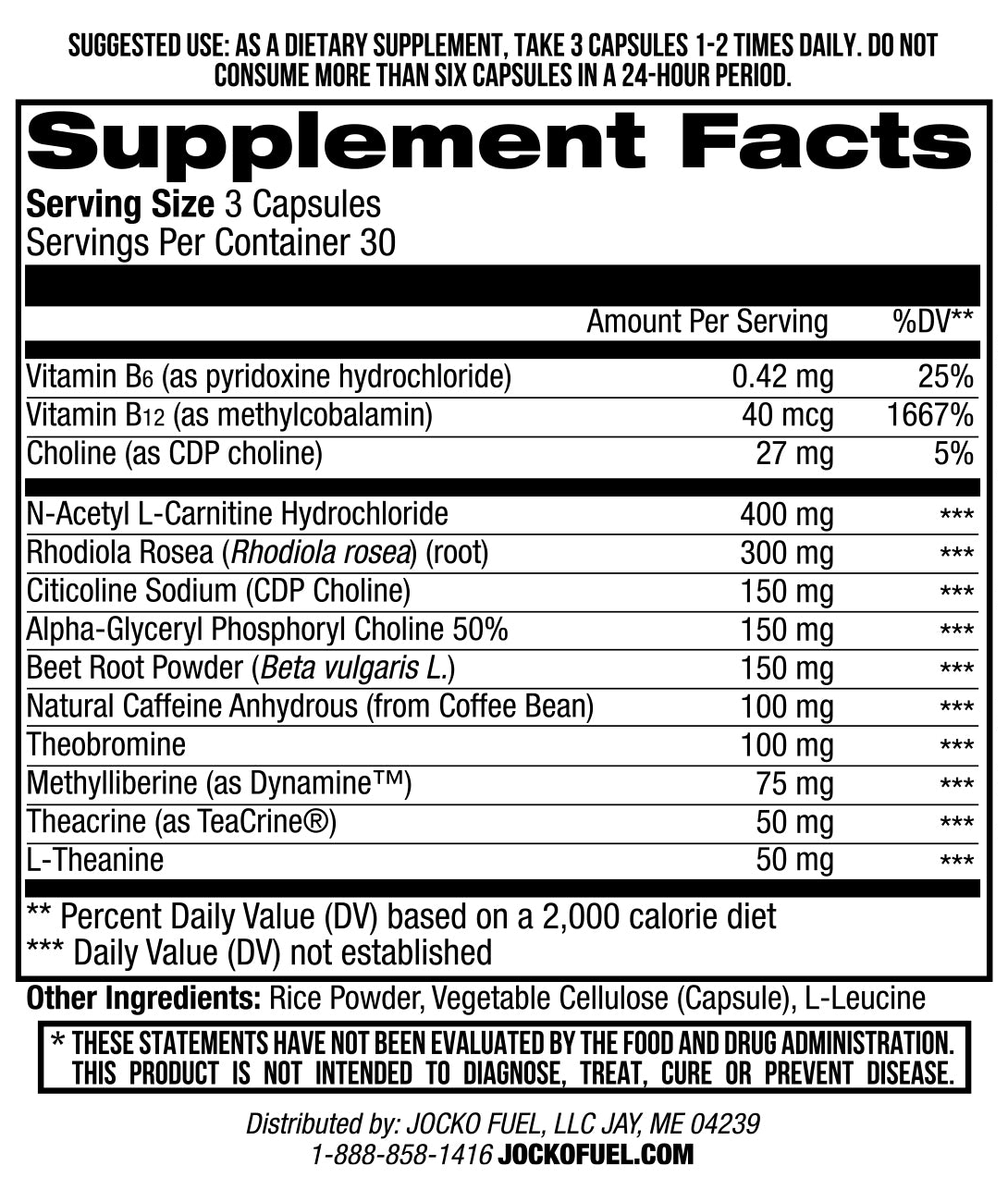
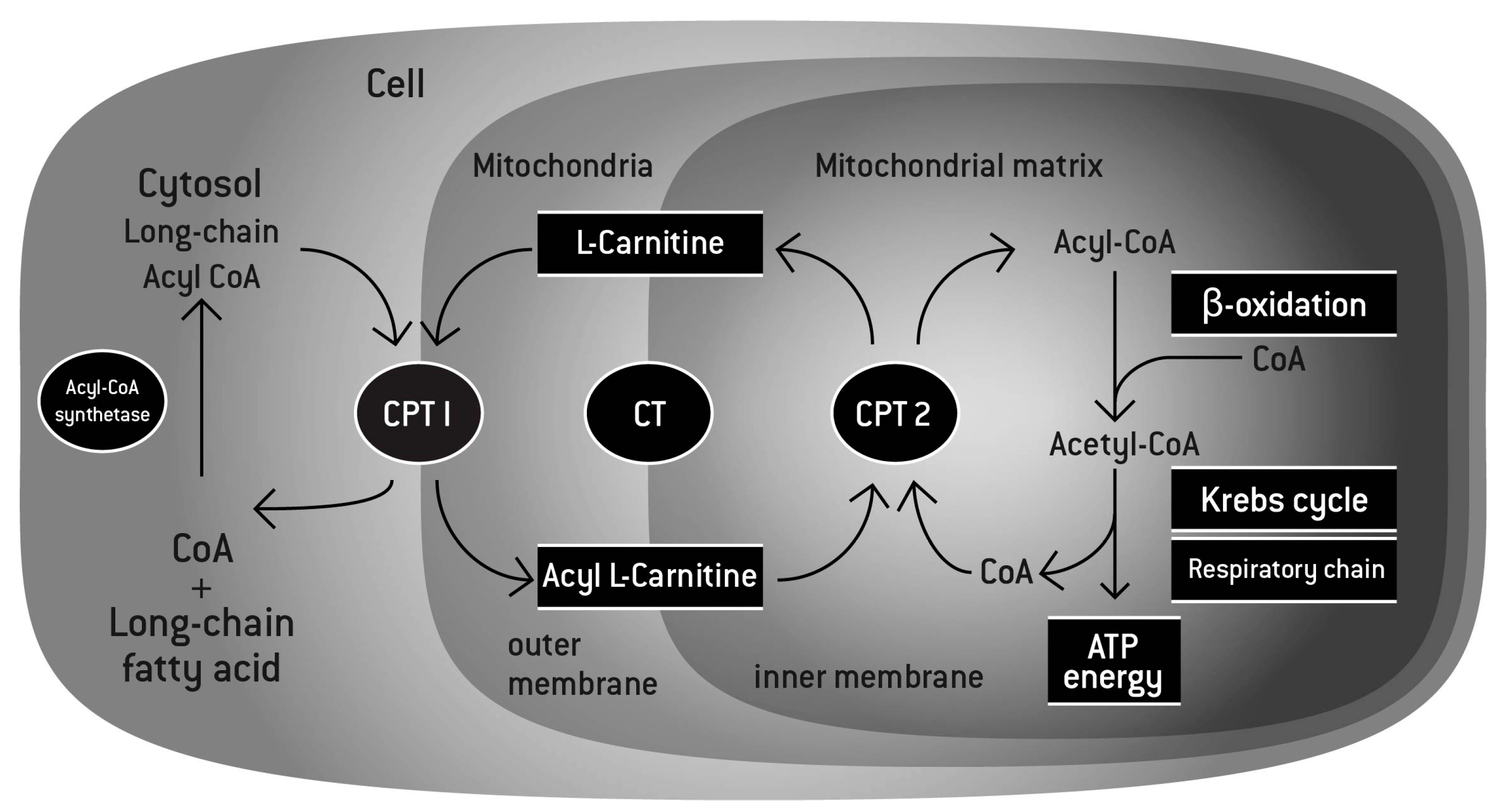

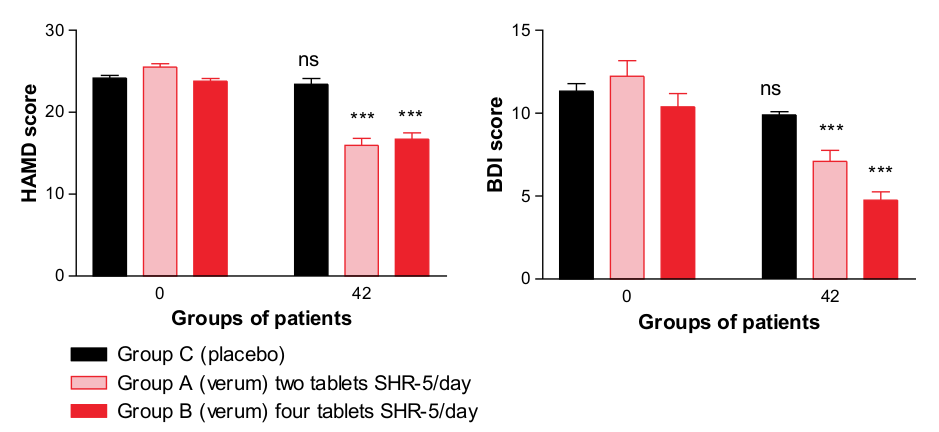
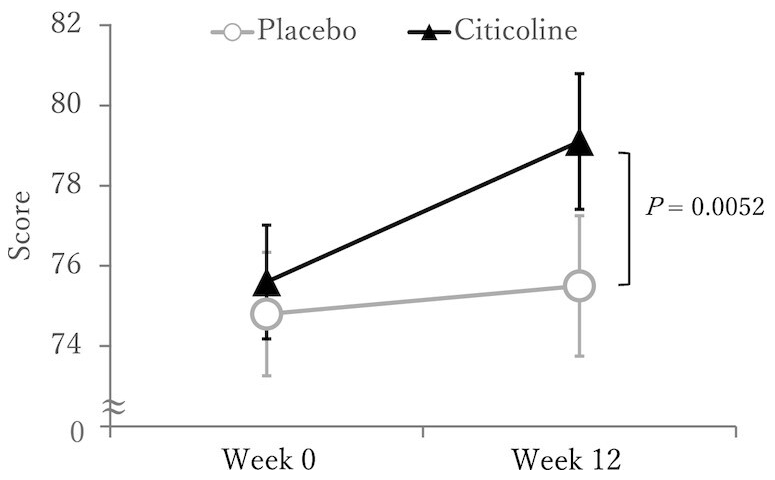
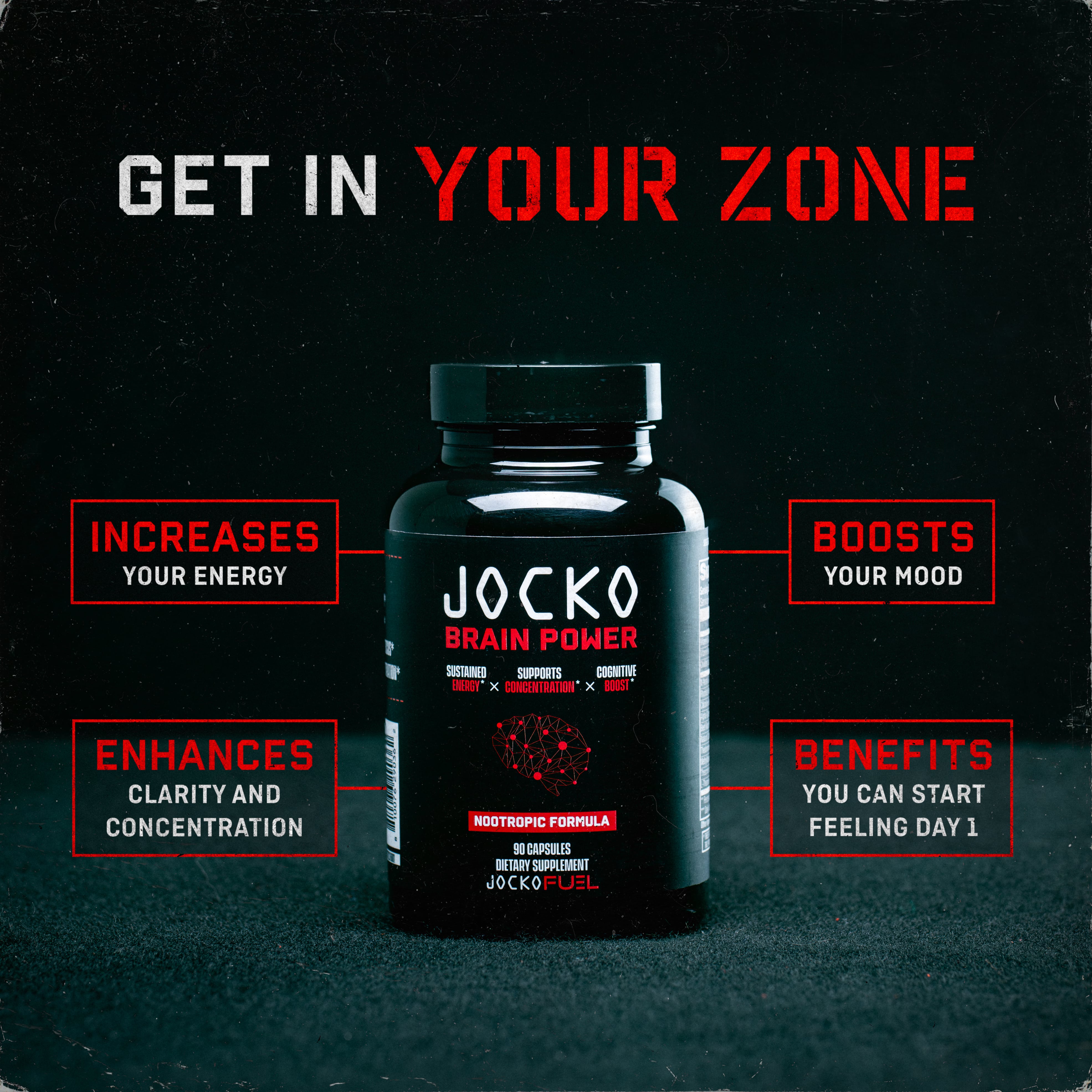
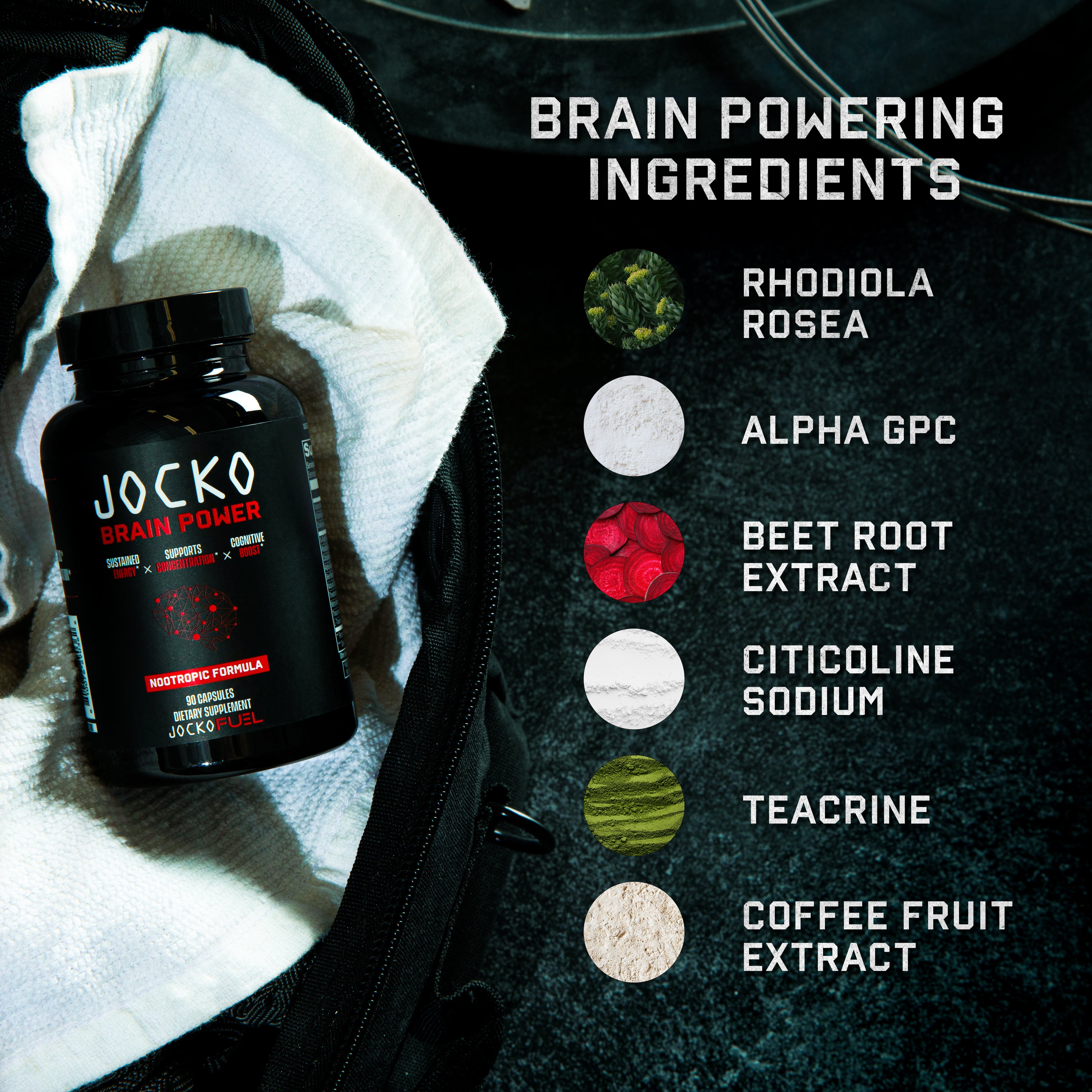


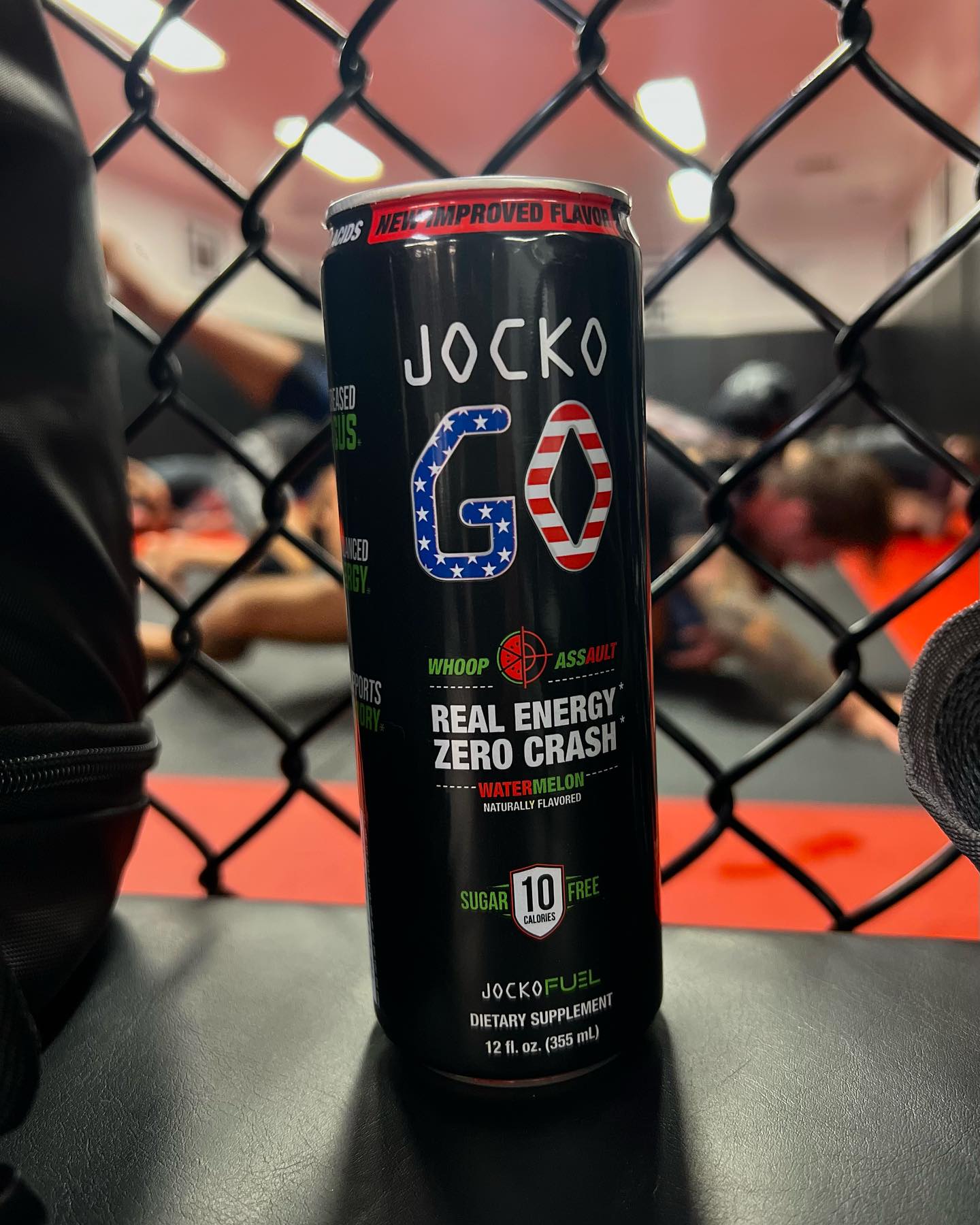
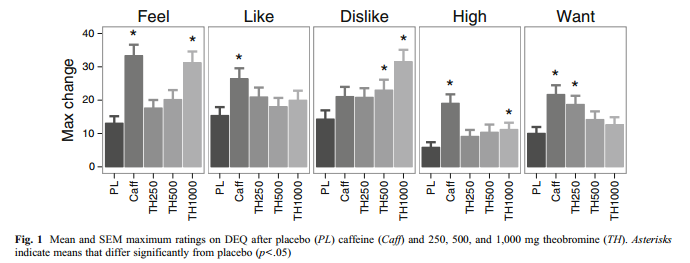

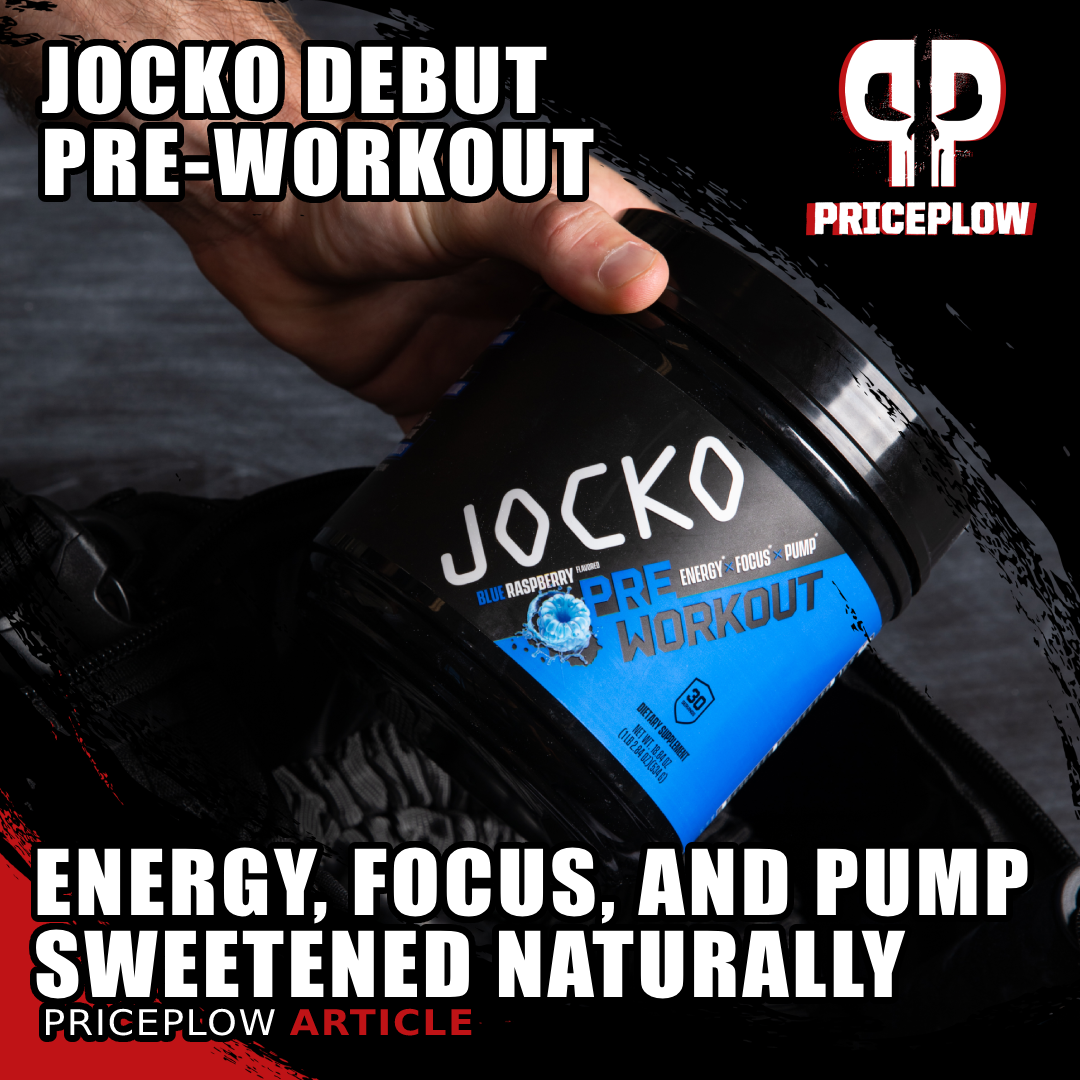
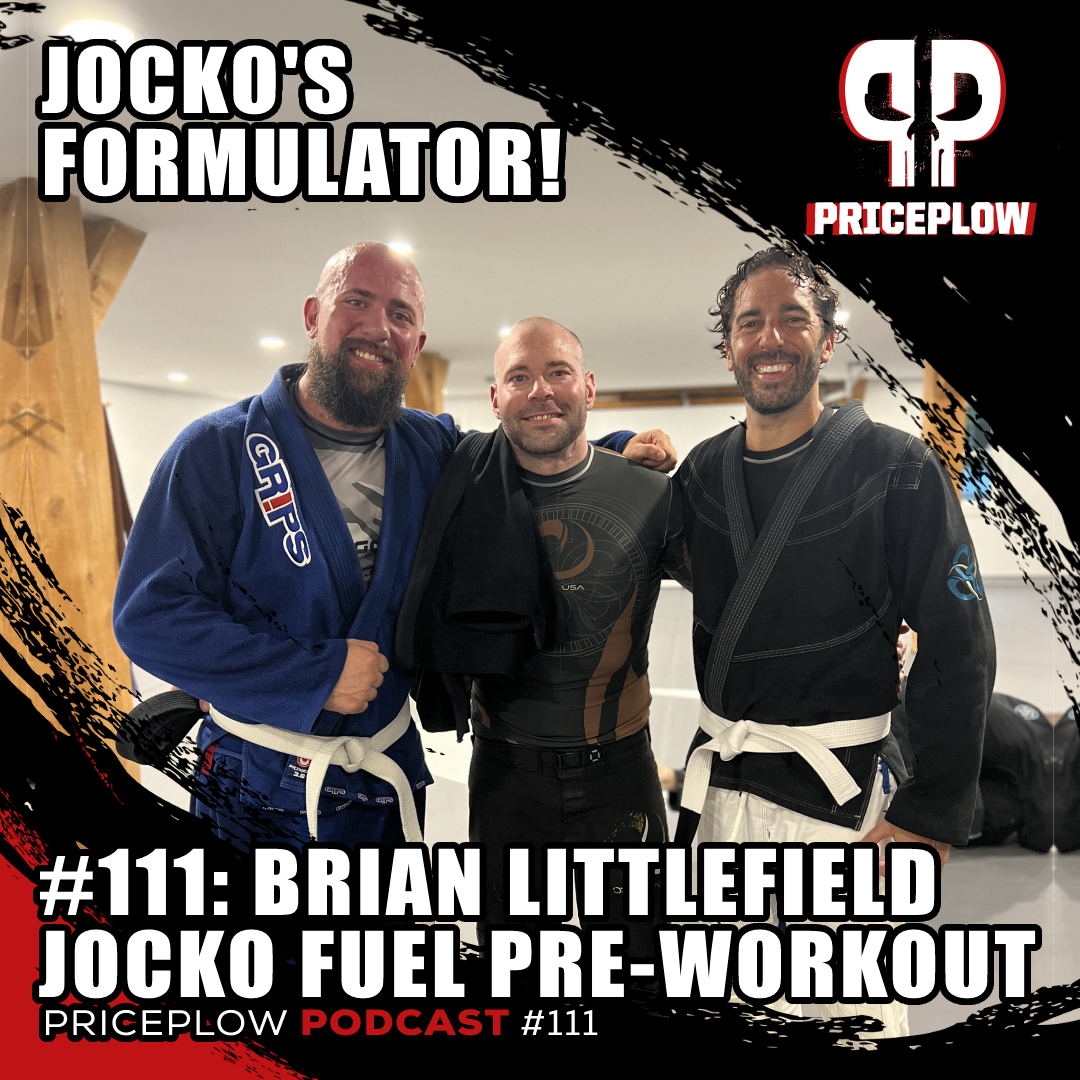
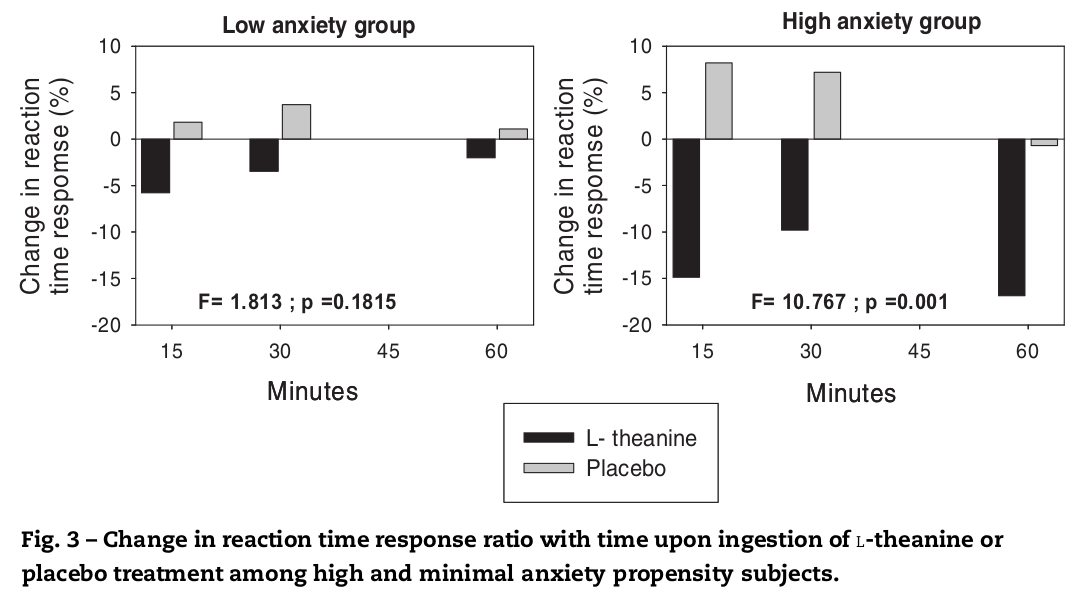
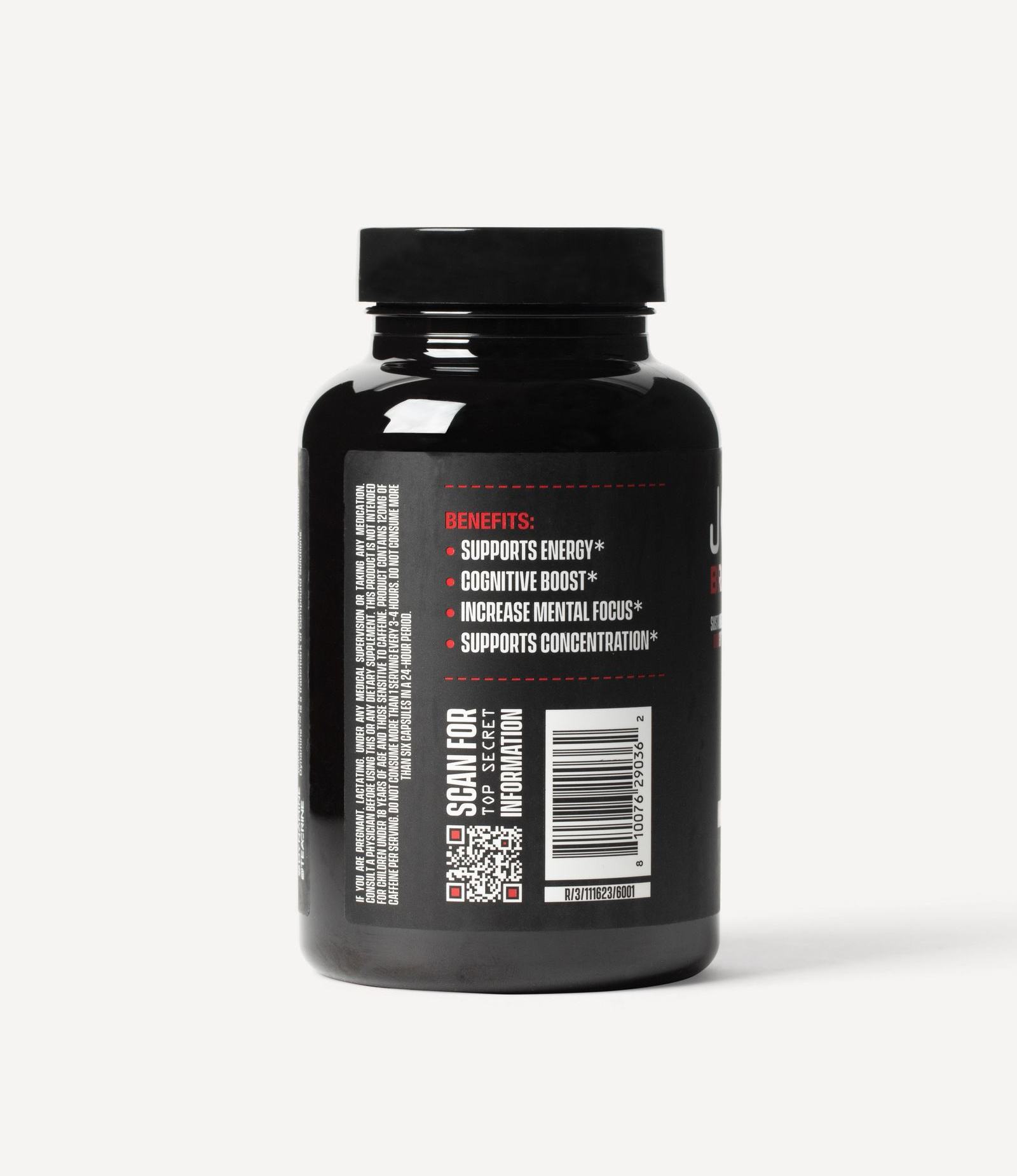



Comments and Discussion (Powered by the PricePlow Forum)